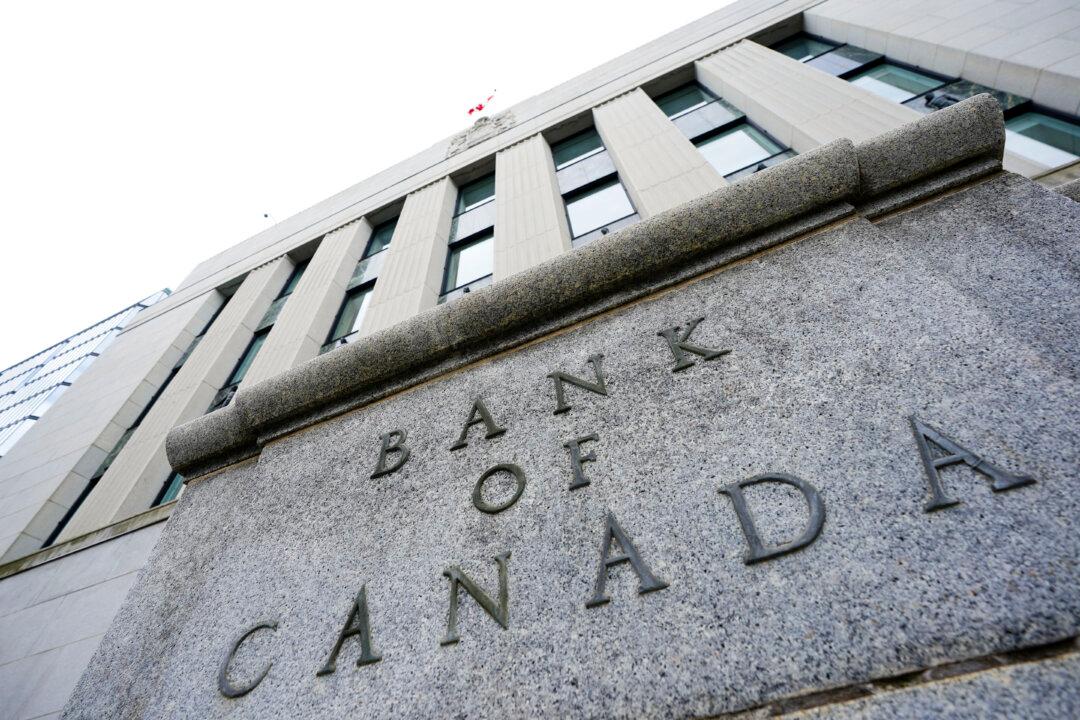OTTAWA—The Bank of Canada increased its key interest rate by 50 basis points (half a percentage point) to 3.75 percent on October 26, maintaining that inflation is still too high.
The BoC has now raised its overnight rate target by 3.5 percentage points since March and the October rate hike marks the sixth consecutive time the BoC has raised rates this year.
“The Governing Council expects that the policy interest rate will need to rise further,” the bank said in its press release.
The bank reiterated that it expects inflation will return to the 2 percent target by the end of 2024.
Regarding the chance of a recession—two straight quarters of negative economic growth—the BoC said that, toward the end of 2022 and the beginning of 2023, it is just as likely as having a small amount of positive growth during that period.
This is a result of downgrading economic growth projections in quarterly forecasts published in its October monetary policy report (MPR). Compared to July’s MPR, 2023 growth is revised notably lower—from 1.75 percent to just under 1 percent.
“Economic growth is expected to stall through the end of this year and the first half of next year as the effects of higher interest rates spread through the economy.”
But growth is expected to pick up in 2024, reaching 2 percent, as the impact of rate hikes fades, the economy’s growth potential picks up, and foreign demand stabilizes.
The bank said the labour market is tight across a number of indicators—the job vacancy and unemployment rates in particular are at or near historical highs—and that the firms it surveyed continue to face labour shortages.
Rate Hikes Take Effect
The Bank of Canada noted that, as a result of past rate hikes, housing activity has “retreated sharply” and spending by households and businesses is softening. It added that due to the slowdown in international demand, exports are slowing.
Prices rose by 6.9 percent over the year that ended in September, which marked the third straight monthly decline in the rate of inflation mainly due to lower gas prices. But Canadians are feeling the pain from higher food prices which rose 11.4 percent, the fastest pace in over 40 years.
The average of the central bank’s three measures of core inflation—which attempt to capture the underlying inflation trend by minimizing the more volatile elements—is an elevated 5.3 percent. Two-thirds of the components of the consumer price index (CPI) have increased by more than 5 percent over the last year.
The BoC attributes the expected fall in inflation to the effects of past increases in commodity prices dissipating and global supply disruptions easing. The higher level of interest rates is expected to dampen demand and bring about a better balance between supply and demand.
The bank said higher energy costs have had a bigger impact on inflation than usual and that it will take some time for those unusually large impacts to fade.
But a sign that inflation is coming down is three-month CPI inflation which is well below the annual reading. The BoC said three-month core inflation point to a slowdown to around 4 percent.
One of the biggest concerns for the Bank of Canada is ensuring that inflation expectations remain under control; however, they are elevated in the near term. Inflation expectations can be a self-fulfilling prophecy—if people expect prices to keep rising, then it’s more likely they will.
Based on survey responses, the BoC reported that uncertainty about the future path of inflation is high, but longer-term inflation expectations remain consistent with the 2 percent target.





